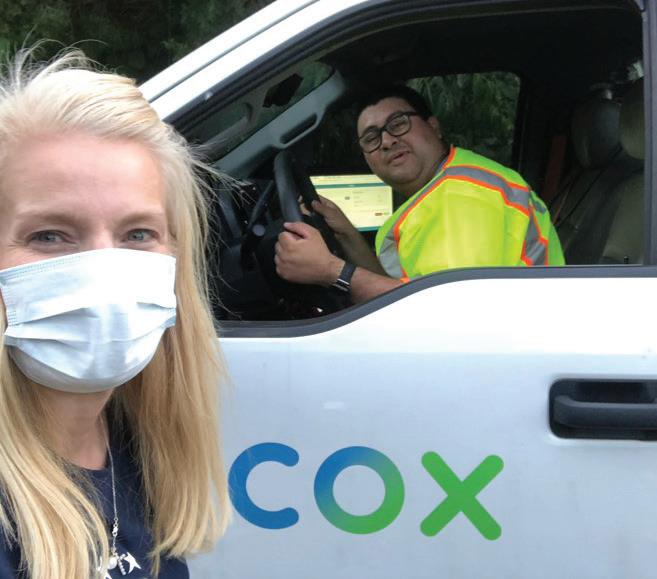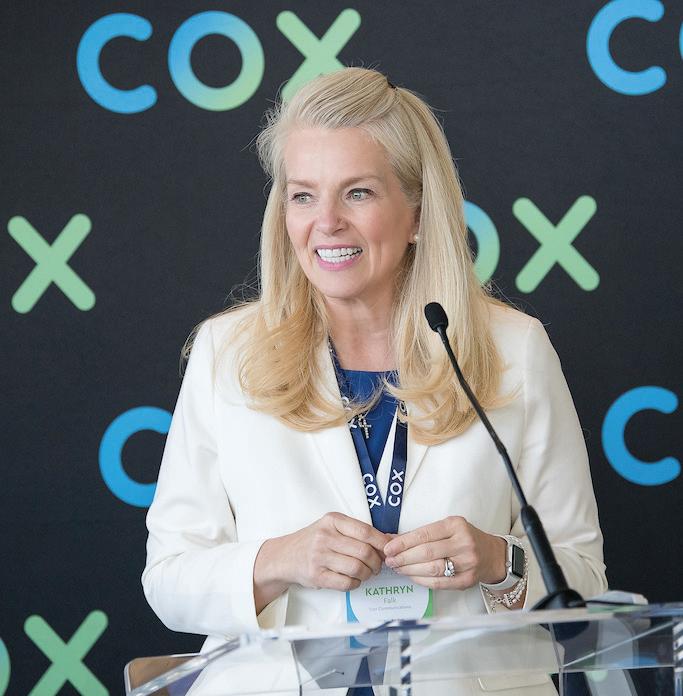
5 minute read
Business Recovery Depends on Women Thriving at Work
THE ROAD AHEAD Business Recovery Depends on Women Thriving at Work
BY KATHRYN FALK
Have you heard about the ‘She-cession’? It is real and business leaders must act to stem the impact, or their businesses will suffer.
2020 was an incredibly challenging year for everyone, but new data show that women were far more negatively affected than men – and that’s bad for business. Examples include a higher percentage of job losses, reduced hours, and departures from the workforce among women. In fact, according to analysts led by Joyce Chang, global research chair at JP Morgan Chase, over the past year, women’s participation in the labor market has dropped to a 33-year low.
“This is a critical moment for corporate America,” states McKinsey’s recently released “Women in the Workplace” study. “Companies risk losing women in leadership – and future women leaders – and unwinding years of painstaking progress toward gender diversity.”
According to a study by the St. Louis Federal Reserve, the unemployment rate for men and women was similar from January 2020 through March, before spiking for women at rates that remain elevated. Why? Because women held more jobs in particularly hardhit industries like hospitality, retail, education, daycare and tourism.
The numbers are devastating. The Center for American Progress (CAP), a Washington-based economic think tank, reported recently that women have lost a net 5.4 million jobs over the course of the pandemic-induced recession – nearly 1 million more than men. The job losses in December 2020 were particularly bleak. That month, though men gained about 16,000 jobs, 156,000 women lost theirs.
The CAP report estimates that losing even 1% of working mothers means a loss of $8.7 billion in wages, but the real cost could be far higher: as much as $64.5 billion in lost income due to an overall reduction in the maternal labor force.
The McKinsey study, meantime, notes that “working mothers have always faced a double shift – a full day of work followed by hours spent caring for children and household labor.” With school and childcare support gone, the responsibilities of working mothers grew substantially as they added childcare, teaching, and elder care for aging family members confined to the house to their list of duties.
While the immediate crisis of losing paychecks was somewhat blunted by state unemployment insurance and federal programs, the longer-term impact is significant. Women were not at work to earn promotions, gain experience, accrue retirement and other benefits – while at the same time being forced to deplete their savings.
These impacts have been particularly severe on minorities, especially Black and Latino women, says the St. Louis Fed. Also hit hard: women with college degrees and the women from “Generation Z” (born between the mid- to late 1990s and early 2010s).
Simply put, the longer a woman is out of the labor market, the harder it is to go back. We cannot afford to lose a generation of women from the workforce.
As we begin to envision a return to work, we must address these impacts on women head on with focused support.
Fortunately, a crisis is also an opportunity. As McKinsey’s Women in the Workplace study states, “If companies make significant investments in building a more flexible and empathetic workplace (and there are signs that this is starting to happen), they can retain the employees most impacted by today’s crisis and create more opportunities for women to succeed in the long term.”
Companies should look at this as a chance to add best practices to become an employer of choice for women. I am fortunate to work for Cox Communications, where many such practices have been in place for some time.
Become an Employer of Choice for Women
HERE’S HOW:
FLEXIBLE WORK
OPTIONS – Flexibility allows a better balance of responsibilities inside and outside of work. As the McKinsey study says, we need to reset expectations around flexibility and the need to be “always on.” Companies should look for ways to establish new worklife boundaries.
ROBUST EMPLOYEE ASSISTANCE
PROGRAMS should be part of your benefits package to support employees through major life events and bumps in the road with services like counseling and referrals to support services.
EMPLOYEE RESOURCE GROUPS
can provide support, career development and networking at work.
Provide MENTORS
AND MENTORING PROGRAMS.
Provide ROBUST
HEALTH CARE for women and their families.
Have a FOCUSED
PROGRAM OF CAREER PATH DISCUSSIONS
and education to help women understand how to grow their career within your company.
Take steps to
ELIMINATE GENDER
BIAS. Do you always look for new hires from one source? Expand your pools and actively reach out to women to become candidates.
Create a CULTURE
OF EMPATHY.
Lead by example in demonstrating compassion, understanding, and asking how your employees are doing, not just what your employees are doing.
PROVIDE OPPORTUNITIES TO GROW AND
DEVELOP; offer training and leadership development programs.
Consider CHILDCARE
CREDITS OR COUPONS
for employees with children and perhaps tutoring support for children of employees.
ENCOURAGE MEN
TO HELP. Women do a disproportionate amount of unpaid work at home. Encourage men to do more by giving them tools like parental leave, employee resource groups for dads and more.

OPPOSITE PAGE: Cox Communications Field Network Technician Brandon Callen and Kathryn Falk, Vice President Northern Virginia Field Operations. “Brandon was out on a complex job, so I went to meet him to say thank you for his hard work.” ABOVE: Kathryn at the November 2019 Cox Communications Smart Home at the Adaire luxury apts in Tysons.
So, what’s in it for business and why should you make this a priority?
Last year, Women in Cable & Telecommunications (WICT), a 40-yearold leadership development organization that commissions original gender research, launched #LeadWithMore. This effort and its research revealed several important benefits businesses realize when a more gender diverse team is in place. These include increased innovation, profitability, recruitment and employee retention. In addition, according to a second study by McKinsey entitled Diversity Matters, research shows that company profits and share performance can be close to 50% higher when women are well represented at the top.
And of course, women are your best customers and potential customers.
According to both the Harvard Business Review and Forbes magazine, women control or influence 85% of all consumer purchases in the United States. Globally, they control $31.8 trillion. Supporting women in the workforce and your company is good for business and your bottom line.








